May 15 - May 22
I left Belgium with a new reverence for labor unions. I had just spent two days visiting the post office trying to retrieve a letter from America. It arrived just as the Belgian postal delivery personnel went on strike. The tellers at the offices were not on strike so when I arrived at the post office, I was greeted by a deeply bored window teller. I was told in half-Flemish, half-English, that the letters were not moving but that I was welcome to buy stamps.
It was explained to me that the all the letters were gathering in the office to languish in sacks unsorted and untouched. I was also told that the Pentecost was happening this weekend, and it was unlikely the strike would end or mail move before the holiday. I was cheerily informed I would have my letter in no less than a week. A letter that was in the same building I was in. It was all so matter-of-fact that I could do little else then shrug and thank them for the inconvenience.
Instead of languishing like the letters I decided to take a bus to France and seek my adventures elsewhere. The bus was to leave from a corner just outside of Ghent’s train station but there were no sign or marks to confirm this fact. People with baggage began to gather on the corner. They all looked equally bewildered. Everyone eyed everyone else looking for clues that someone else was planning to take a bus, checking to see if someone’s luggage looked like it was going to France or if a bus ticket was sticking out of a pocket.
I broke the silence and asked a girl (who looked about my age) in the clumsy Dutch I had learned, if she was also waiting for the bus to Paris. She replied, “Oh I’m sorry I don’t speak Flemish.” I told her I didn’t really either and asked again in English. She was waiting for the same bus, so I put down my pack and prepared to wait. In idle conversation I learned that she was an exchange student from Spain, actually a Basque. She was en route to spend her holiday weekend in Paris.
I had her give me a basic grammar lesson in Basque, and soon the Bus arrived. The ride to France was uneventful. I slept mostly or talked to the Basque student across the aisle. I asked her about secession, and she just laughed.
In Paris I wasted no time and went from the bus stop to Gare St. Lazare. I arrived with about half an hour to spare before I had to board my train to Normandy. I had intended to arrive in Caen and look for a hostel, but I decided I should call ahead. I had written down the name of a few hostels. I called them only to be informed that they were all closed until June. Some of the hostels were hostile and abruptly hung up on me. Others laughed when I suggested that they let me stay anyway, promising I would wash dishes.
Every 20 minutes Gare St. Lazare is the site of a very strange ritual. Train platforms are not announced until just before the train departs. So people gather at a large central mechanized board that, at the appropriate time, tells them what platform to go to. You can see hundreds of people, open-mouthed, craning their necks in perfect unison to see the board flash. They look like a large troop of meerkats all surveying the same spot on the horizon. The board flashed platform 19 for the train to Caen, and I and several hundred others grabbed our bags and rushed to get a good seat on the train. Then the quietly observant meerkats turned into a stampede of buffalos.
A bit dazed and confused within the swarm of people, I somehow made it into a seat. The train ride was even less eventful than my ride to Paris, as I slept soundly nearlythe entire way with my face against the window. The few times I awoke I noticed the rolling hills of northwest France broken by the occasional village church steeple. In these moments I sometimes imagined myself a medieval pilgrim walking on foot from small town to small town on my way to Avignon or Turin or some other famed pilgrimage destination. I imagined what they must have felt when, after long days of walking, they saw a steeple on the horizon with all the promise of hospitality and rest. It was marvelous to see the dot of the steeple become a town as I got closer. A few days later, when I rented a bicycle I would think of this again as, tired and thirsty, I would focus on just getting to the next steeple.
Once in Caen I was not totally willing to accept that all the hostels were closed. I walked to the tourist office and was again informed they do not open until June 1st. While I was there I grabbed a map and a list of hotels and began to walk. I must have walked the entirety of the town in the next two hours, pausing only to sit in bus shelters to wait for the periodic evening showers to pass. Each hotel I went to left me feeling I could find better. Unsuccessful in finding a room, and a little soggy I passed a side street not far from the tourist office where I had begun. There, tucked behind a Chinese restaurant, was a little hotel. Yellow light glowed from the windows in the dusk. I tromped in and in my burgeoning French asked to see a room.
The clerk was kindly and spoke clearly and slowly to me. After he showed me a nice blue room, we returned to the reception desk and I took it. I conducted the whole affair in French, including small talk about the weather. This was a major triumph for me, as I really had only been forced to speak French for a day. I got a kebab at a snack shop around the corner and went to bed early.
In many ways I was unprepared for my trip to Normandy. I knew there was an archive I had to get to, but I didn’t know where it was. I knew there was some material in the archive that I needed, but I didn’t know how much there was or how long it would take me to work through it. I knew there was a holiday weekend in Belgium but didn’t realize it was also in France. So when I woke the next morning I was informed that everything was closed, the buses were not running, and no one had ever heard of the archive.
I decided to stay another night in the hotel and spend my day finding the archive. A map at the bus stop provided the general direction I wanted to go and identified a region of the city that shared the same name as the archive, “Ardenne”. So I set off, umbrella in hand, into the gray morning. Norman weather is not known for its pleasantness or permanence. It is often raining and always changing. Painters have commented on the wonders of the thousand different grays in the skies of Normandy (that’s what I call finding a silver lining). For my part I did enjoy the swirling clouds and breaks of light in the sky, but also feared the next downpour.
My walk took me over even more of the city than my hunt for a hotel had. Caen is an old city and was an important administrative city for William the Conqueror in the 11th century. Several ecclesiastical structures and the better part of a castle still exist from that time within the center of the city. Many structures have been extensively rebuild, either by later French monarchs for their own reasons or after being ruined in the Second World War. The Nazi’s held Caen unexpectedly long after the Normandy invasion. As a result of allied bombing and German attempts to sabotage anything usable, the city was pretty well destroyed. As for the 11th century monasteries and churches, they were the only things open in the city. While I could not find a place to buy bread I could find lots of elderly woman in prayer.
I crisscrossed the city and eventually arrived at the edges of Caen. I decided to push on into the area I assumed to have the archive. I ended up in the middle of a field and had to back track. I tried again only to end up in the playground for a housing complex. It wasn’t until my third return to the city limits and my third plunge into the periphery that I finally saw the archive. The sun was out and I could see a lovely gothic structure beyond a field of yellow wildflowers. The archive is housed in a 13th century monastic abbey. I walked along a country path until I reached its walls. At the corner of this property is a commemorative legend dedicated to Canadian soldiers who died in the battle for Caen. Of course the abbey and the archive were closed and I found myself having to decide between scaling its 20-foot walls and returning to my hotel room. I decided against the wall climb but looked forward with great anticipation to the time I could enter by the door on Tuesday.
I had hoped to make arrangements to work at the archive that day. Instead I e-mailed my contact there and arranged for my arrival after the holiday weekend. So I then had four days in Normandy to kill until I could begin my work. I walked home in the rain wondering what I could do. I arrived back at the hotel at 8 o’clock and realized I had been continually walking for about 10 hours. I fell fast asleep after devouring a block of cheese and a bag of peanuts I had saved from the day before.
The next day the sun was shining although grey clouds crowded the horizon. I decided to spend another day in Caen. Certain shops were open again and I got some groceries. I was also delighted to find out that the local art museum was open.
I must say it is a treat for an art lover to visit a regional art museum of France. It’s not because they house masterpieces, but precisely because they do not. The Caen museum has a wonderful selection of art collected in the Caen region since 1400. What I had come to realize is that the majority of art is really…how do I put it…bad. I saw room after room of oriental scenes of harems from the 18th century and room after room of dark still lives of bread and fruit from the 16th century. All of them were stiff, poorly executed, or just plain weird.
At one level this makes my appreciation for “masterpieces” that much greater. It becomes clear that there is really something exceptional about Raphael or Goya or Degas, when you compare them to their contemporaries, which a museum like this allows me to do. I await with greater anticipation my time in Paris and the Louvre where such singular masterpieces really do hang. On another level, the mediocre works of art are a fascinating representation of the material world, of a history of what we own. It tells a story of what people possessed and what possessed people. For instance, what really compelled anyone to commission a 6-foot circular canvas of bathing cupids in 18th century Caen. If one is to consider a history of taste (which I think is an interesting thing to ponder) one cannot miss a museums like this.
From there I made my way beyond the castle to the north of the city and to the campus of the University of Caen. There was some activity. The campus looks as if it was constructed circa 1970 with a lot of concrete in a sort of formalist design. Box like buildings have names like “science” or “letters” in big block letters above the doors. A handful of student stood smoking outside one of the slab concrete building, which housed a little café that sold 1-euro coffees, the cheapest I’ve found.
In the midst of all this concrete is a small glass building and inside it is a true curiosity. A history professor from Caen spent most of his life creating a scale model of Rome at the time of Constantine. The city is nearly complete and all rendered in plaster. The whole thing fills a the floor of a large atrium with an observation deck above so you can see the details of the city from above. This bizarre labor of love sits quietly without much notice from the passing students. I spent a long time staring at the thing. After a while I returned to the café and spent the rest of the day and into the evening writing. I was tempted to spark up conversations with some of the students working in the café, but was still too shy about my French. For dinner I bought a baguette and some duck liver paté and ate in my hotel.
The next morning I checked out early. I had decided to spend the remainder of the weekend in Bayeux. Bayeux is famous for housing the Bayeux tapestry. The train was only 20 minutes from Caen. The day was sunny and warm. Again I went to the tourist office, and again I was told there are no hostels. I thanked them and took a list of hotels. Tucked in one corner in a section for rooms to rent was a small notice for 12-euro rooms. I thought it was worth a shot and I walked across town to the address in the pamphlet.
I arrived at an 18th century manor house. It was three stories tall with somewhat neglected but still presentable formal gardens. After passing the creaking gate I could hear “Johnny B Good” being played loudly from a ground floor window. I went to the door and knocked. No answer, just music. I knocked again. Unsure if anyone heard me I turned towards the gardens to look for another door. Just as I did the door swung open and an old woman not much taller than my chest peeked out. I explained I was looking for a room. She apologized she didn’t speak much English, but still continued to speak in English even after I told her she could speak French.
She brought me into the front hall. The place was as I would have imagined Miss Havisham’s to be. It had a cracked marble floor, lots of fake flowers and multiple staircases going in various directions. She explained that she normally doesn’t rent for a short term, and she normally doesn’t rent to only one person, but that she liked my face. She looked into my eyes and said and took my hand and said, for you “15 euro”. I agreed. I was too mystified to haggle. “Ok, but come at 6 I will make your bed.”, she said. I agreed to return later and went into Bayeux.
A few scattered posters advertised “A night of museums”. Apparently all across Europe museums were going to open in the evening free of admission. Although I wasn’t in a city where I could take advantage full of this and enter the grand and famous museums of the continent, it would permit me to see the famous Bayeux tapestry for free. I just had to wait until 8 o’clock.
In the meantime, I got some bread and some fruit, some cheese and some juice and sat in a park near the massive Bayeux cathedral. This was an important cathedral for William the conqueror and it was the place for which the Bayeux tapestry was created. I was really hoping to bump into fellow tourists. But the town was still sleepy and the only travelers I noted were French. I still didn’t have the courage to abuse them with my terrible French.
In the later afternoon I walked out to the edge of town and visited the cemetery for British soldiers who died in the Normandy invasion. It was a modest plot with a modest monument. The most interesting part was observing the variety of crests on the head stones. Each unit has it’s own insignia, some of which are very intricate, and these images were carved into the marble crosses for each known dead soldier. The missing and unknown soldiers were commemorated with a miniature Greek temple.
Just alongside this memorial was a second memorial dedicated to Journalists who have died in the line of duty. It was tucked away out of sight from the road and was very hard to identify. I walked the length of the memorial, which consisted of a row of menhirs on a well-groomed garden path. On the pillars were printed names and dates. I noticed the names were obviously foreign and saw some that were clearly Japanese and clearly Turkish. I was totally lost as to their significance. The whole row ended with a horizontal pillar with a quote from Simone de Beauvoir about the virtue of liberty, a quote so general I was left even more confused. It wasn’t until I returned to the road and saw a road sign pointing to the Journalists cemetery that I figured it out. I felt it was a necessary memorial.
I returned to the house at 6:00. Again I knocked but got no answer. After a long while the landlady poked her head out of a 4th story window, and said, “I come.” After another long while, whilst she descended all those stairs, the door opened and she beckoned me in kissing me on both cheeks. We climbed slowly up several flights of stairs past walls densely hung with paintings and dusty crystal vases on marble tables. On the top floor I was shown into a small apartment. I had a kitchen a bathroom and a TV with rabbit ears. She asked me to help her tuck in my bed, as she was unable to bend over. From her pocket she produced a large iron key. It could have been a prop used in “key to the city” ceremony, but it was really for the front door. She wished me a good night and shook my hand vigorously. I listened to her steps descend the several flights of stairs and disappear into the depths of the manor. And with that, and to all intents and purposes, I had just rented a French manor for 15 euros.
I splashed some water on my face and headed back to town. The key made a loud clanking noise in the lock box and worked only after significant jiggling. It lay heavily in my pocket and one could distinctly see the huge outline of a key in my pants. I made my way to the tapestry museum.
The Bayeux tapestry was commissioned by the Bishop of Bayeux to commemorate the events of the battle of Hastings. The majority of the tapestry really has to do with the lengthy build up to the invasion and only the last few panels are the battle itself and the conquest of England. It was to be shown every year for 20 days in the cathedral. It is in many ways a pre-modern comic strip. The tapestry is only half a meter tall but runs horizontally for dozens of meters, and would have wrapped around the interior perimeter of the church. Its use was for nothing less than to educate the illiterate. Here we see that the visual has a long history of being used as a political tool for popular indoctrination. Now it lives in a former government building in a specially designed room inside a massive horseshoe shaped glass case.
The story is not purely self evident from the images themselves, and so it would have to have been shown with instruction from the clergy. As for the modern viewer you get a little hand held audio device with which to hear a recording of a man with a strong British accent telling the story while gothic music plays behind him. Occasionally there are sound effects of horses galloping and or swords clanking. Instead of bringing the story alive for me this device and these sounds had the opposite effect of poignantly reminding me that I was living in 2007 and that I was temporally distant from the tapestry.
The narration focused on the central panels, there were also bands of highly detailed images on the top and bottom of the tapestry. They were images of animals in the forest men in the fields. I was once read a book about the complex relationship between image and border image in gothic graphics, a topic about which I am by no means an expert. The author was interested in how these smaller, sometimes unnoticed border images actually change the meaning of the central images. In the middle of the tapestry there are two border images that stick out as totally incongruous with the rest. The first is of a naked man rendered in black wool with a giant penis pointing to the earth while his hands are on his hips. The next is of a hunched man who grips an axe. He too has a huge penis but it is rendered in red wool. The image above these border scenes if of a faceless woman, clearly noble, standing in a doorway. The audio device did not mention the penises or identify the woman. I’m not even sure where to find out about these truly bizarre images. The guard at the end of the tapestry suggested I go to the gift shop. But I sincerely doubt they have a book on the genitals of the Bayeaux tapestry. Perhaps I’ll take this up as a doctoral thesis.
There was still daylight and time in the “night of museums” to see another. So I walked back out towards the British cemetery to the Bayeux D-Day museum. I was hoping to see artifacts or unique objects from the invasion, but by and large the museum was just kiosks with written information on the invasion in French and English. It was kind of like walking though an encyclopedia article on Normandy 1944. They had a few uniforms from the various armies, and a room of rusting jeeps. The most interesting was a description of how the allies outfitted tanks for hedgerow combat. They had amazing pictures of soldier welding German anti-landing craft obstacles onto the front of US tanks. It gave the tanks giant teeth to crash into and tear up hedges with. These metal obstacles had once been used to block a water landing, each looks like giant jax, but now they were being appropriated to demolish field positions. There is something both poetic and sinister in this reversal of function
I got out of there pretty quickly and walked home listening to Frankenstein on audio book. I had never read it before and was surprised how much I liked it. I stayed up most of the night in the old mansion listening to the story. Just as news of the monster’s first victim developed in the story it started to rain and a wind blew through the big mansion. I am not ashamed to say I hid under my covers for a good 20 minutes.
For those who have not read, or have not read it recently, I was interested to mark the Turkish characters in the novel. There is a lecherous old Turk who betrays a young French nobleman and gets him banished, and a beautiful but dim Turkish girl who is slow in learning French (slower than even the monster!). Perhaps these characters were representative of the European sense of the concept of “oriental”.
The next morning was beautiful despite the rain the previous night. I slipped out of the house as quietly as I could which meant creaking on every step and clanging the key in door. I walked to the center of Bayeaux and rented a bicycle for the day. My goal was to reach Omaha Beach. I wasn’t exactly sure how far it was but it seemed reasonable based on the rough map on the back of the brochure for the tapestry museum. I had not been on a long bike ride for quite some time, and I became reacquainted with many muscles with which I had lost touch.
In reality it was quite lovely. I biked north of Bayeux towards the sea and through country roads that ran along green pastures. It was definitely spring and flocks of sheep and herds of cattle were everywhere, with their new lambs and calves. There is a reason the Christian tradition uses lambs as the ultimate metaphor for innocence. Until you’ve seen lambs bounding in the field, you have not seen youth and innocence (calves not so much). And despite my estrangement from own body and continually being out of breath I really enjoyed my ride. Just at the point I needed a cold bottle of water I arrived in Port-en-Bessin. This small port granted me my first glimpse of the English Channel.
It was market day and I walked my bike past the stands of fresh fruit and cheese. There was a woman roasting rabbits and a man slicing huge manhole cover-sized flounders. I walked through the crowd and onto the wharf. On either side I could see the fortress-like cliffs of Normandy. It was low tide and kids scurried along the dark rocks collecting white shells. It was getting gray again, but it didn’t feel like rain. It just felt like Normandy reminding itself to become grayer.
On the wharf a portly Frenchman in an actual beret asked me if I was Canadian, English, or American. I said American. In broken English he said “just go tout droit et voila Omaha.” Curiously, the way he pointed would have also taken me to Omaha Nebraska. He just wanted to help, and I’m sure he would have pointed me in the right direction for whatever national cemetery I wanted. It must be curious to live in a place where the major economy is death tourism. I thanked him and headed tout droit.
I passed dozens of campgrounds, and wished that the weather would warm up and that I had my own tent so that I could go camping. The ride to Omaha beach was easy, except for some near misses as I and two cars tried to negotiate for lane space on very narrow Norman roads.
I was hoping to run into my countrymen at the cemetery but upon arrival I saw only Japanese tour groups. Where the British cemetery was modest the American cemetery was dramatic. At first glance the field of white headstones has the appearance of going on forever. In reality it’s thousands of headstone arranged in symmetrical lines around two intersecting paths. When peering down these incredibly long rows of white crosses the eyes play weird tricks. Some appear to bend and the rows intersect like elements in a stark white kaleidoscope.
It is a staggering sight. I couldn’t tell if the Japanese tourists had a sense of its enormity for they still took pictures with smiling faces and their fingers forming peace signs. (Which is perhaps profound irony or brilliant transgression). Or perhaps they are like anyone on vacation, not too worried about atrocity.
I ate lunch propped up against my bike. I made a picnic of water and fruit and cheese I got from the market in Port-en-Bessin. After lunch I decided to descend the cliff and set foot on the beach itself.
On the way down I gave most of my attention to placing my foot on the steeply inclined path. But when I emerged on the beachhead I was caught in a stillness. Down a ways on the beach kids were flying a kite and people were in the far distance, but I felt quite alone. Turning around to see from where I just came it was hard to understand how anyone would plunge headlong into that beach while German gunfire rained down. At the trenches of Ierper and the Cliffs at Normandy I was struck by the idea of “the push”. It is a far more complicated phenomenon than either desiring to serve or not to serve. It is a far more complicated decision than to simply obey or disobey. And it cannot be reduced to clear choices on the part of the individual soldier. It would seem to me (as detached as I am) it is more like being caught like a deer in the headlights. The moment the whistle blew to go over the top at Ieper or when the landing craft opened at Omaha each soldier must have experienced a moment of stillness (like the one I was having that afternoon).
I biked straight back to Bayeux. By this time it was already late in the afternoon. I stopped only briefly to catch my breath and watch the ships come into dock at Port-en-Bessin. I returned my bike and walked back to the manor. I was asleep even before the sun set.
The next morning I slept in. I showered and dressed leisurely. As I was leaving my hostess emerged and wished me well on my journeys, I returned the anvil/key. I noticed that yet again everything was closed, and that yet another holiday had sneaked up on me. The train to Caen still ran regularly, but I was unable to find a baguette for brunch.
In the depot a group of middle-aged Americans were sitting around chatting. I had finally met my countrymen, but I decided to keep quiet. For some reason my desire to meet English speakers that had flavored the whole previous weekend left me as soon as an opportunity presented. They chatted about the breakfast at the hotel, and how long the train was, and how sad the cemetery was, and butchered the pronunciation of a few French place names. The train came soon after, and in the short 20-minute ride to Caen I remained in earshot of the Americans. They were going to Caen to see Caen’s D-day museum (not to be confused with Bayeux’s D-day museum). Another traveler was sitting opposite them reading a biography of Hitler in English. One of the American’s turned to him and asked, “Is that interesting?” The man with the biography did not reply.
Just as we reached Caen I reached down into my bag and pulled out my worn tourist map of the city. I tapped one of the Americans on the shoulder and offered it to him. He thanked me, and that was that. I somehow felt satisfied.
Once in Caen I returned to the hotel I’d stayed at previously, only to find them full, as was every hotel I visited. I followed the same crisscrossing path across the city I had the previous week, and like the previous week I could find no free rooms.
One place said they could offer me a room at 6:00 if someone didn’t show up for their reservation. So I went and did my laundray in a little Laundromat near the yacht harbor. It oddly had wireless. So I sat and wrote e-mails and searched for a hotel on line while an old French woman watched me intently as she waited for her clothes to dry. I don’t think she knew exactly what I was doing.
Apparently May is the month of long weekends in France and I was arriving on the last day of a 4-day weekend during which most of Paris had made its way to Normandy. Finally, at a hotel I had already been to, the clerk took pity on my and gave me a room with three beds at the price of one person. I decided to sleep on the leftmost bed.
That evening, a bit exhausted and wet from the day’s rain, I decided to treat myself to a restaurant meal. So I ambled into a corner bar and ordered moule frites, or mussels with fries. This is a particular favorite of mine. It was only 8:00 and I felt very American as I was the only one eating. But, it was great. The inside of mussels look extraterrestrial, but they taste delicious. I got them in a cream sauce. The best part is dunking the fries in the sauce and having them soak up all the juices. When they are plump with cream it’s a beautiful thing. I stayed on and had a coffee and read a bit.
The waiter was very kind to me all evening, permitting my French faux pas and being generally pleasant. I must say, the people I have met in Normandy have been very kind, whether a strange old woman with her mansion or construction workers I asked for directions. I’m warned by the same nice people in Normandy that this will not be true in Paris. We will see.
Travel blog of Alex as he combs Eurasia in search of trouble and the lost lectures of Foucault.
Monday, June 4, 2007
Subscribe to:
Post Comments (Atom)
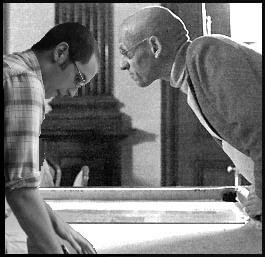
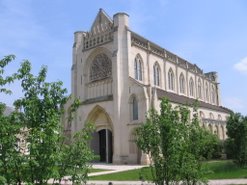
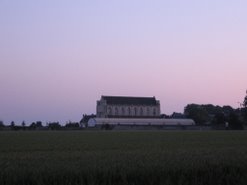

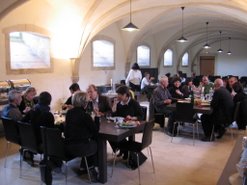
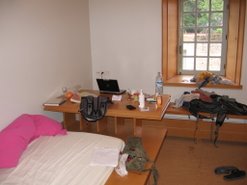
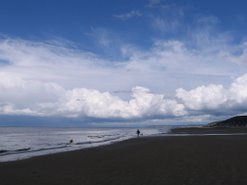
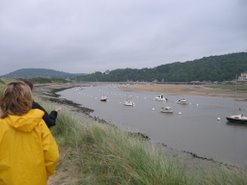
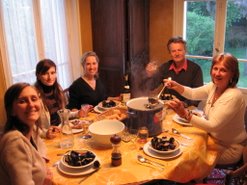
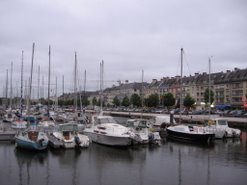
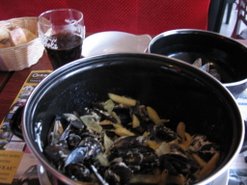

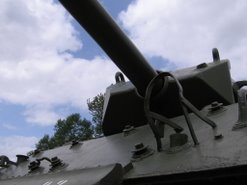
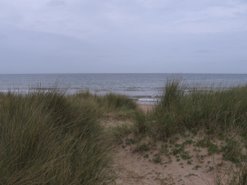
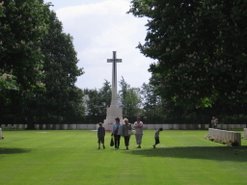
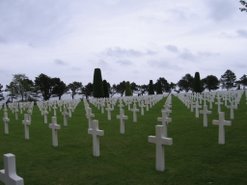
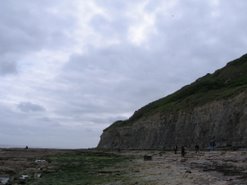
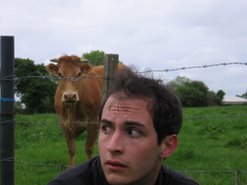

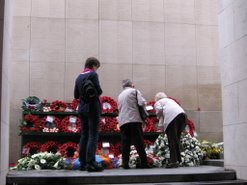

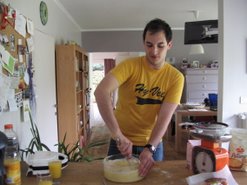
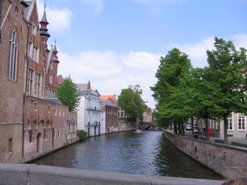
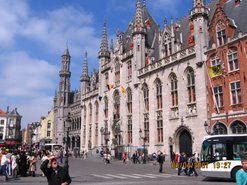

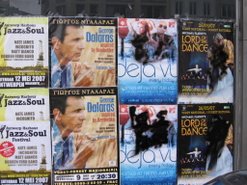



No comments:
Post a Comment